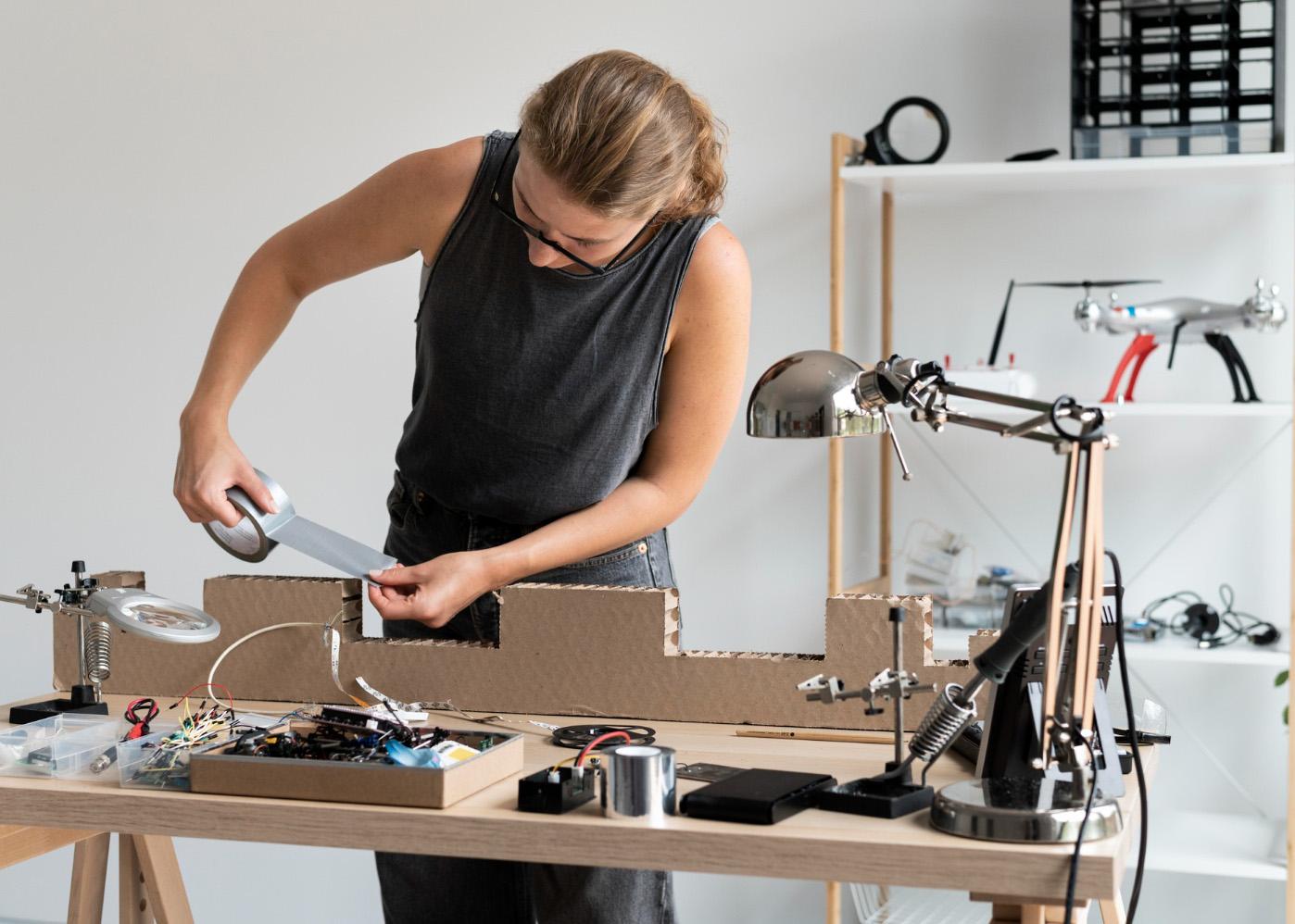
Whether we teach children, teens, or adults, we can easily achieve our pedagogical goals by tapping into students’ needs. So, we teachers bring realia, videos, IPads, and other resources to engage students. All of that enriches the learning experience, but a curious educator should keep exploring. What if learning became less theoretical and more experiential? What if we had more activities in class in which kids participated joyfully and stayed excited about them long after they walked away with something they created? Some of the promises of the maker movement resonated with me, and last weekend, Carla Arena and I ran a maker workshop with eight kids to see for ourselves what would happen. We found a very interesting tutorial by Glauco Paiva in Tinkerlabbr, and put all the stuff we needed together (most of the things was in our tool box, and we opened up broken toys for the motors).
When kids arrived, we were organizing the place, but they did not seem curious at all. They just played a bit and turned on the TV. When Bernardo, a kid who is extremely curious and into robotics, but does not seem to enjoy school so much, arrived, he went by the other ones and came straight to us. He started opening up old toys to see what was inside and playing around with all the items we had displayed on the desk. What happened next was a great experience for all of us. Kids started gathering around the table to check things out. One of the girls screamed, ‘this is not for girls!’. The others replied, “yes it is!” Reactions varied a lot since some of the kids jumped straight into tinkering, others observed, but they all tried. These are the things that I noticed:
Today, many students sit quietly listening to a teacher lecturing about topics they have never experienced or been interested in, and a curious teacher might find ways to enrich his/her practice by having students touch things, learn together and explore.
Being there with Dani and watching those kids collaborate, helping each other with no tutorial, no one teaching them, made me realize that, we, teachers are, in general, preachers. That´s why kids turn off. When they have a goal, when they are into discovery and hands-on activities they are engaged, they are ready for trial and error, they are learning and ask for help only when needed. Kids are totally self-driven. During our informal session, they made mistakes, they worked together, they corrected those mistakes they initially encountered. Some were faster, some slower, but everybody, in their own rhythm, got to the end, successfully accomplishing their main goal of making their $1.99 robot walk. Even though we know that, we are still pouring information in the hope that they will “learn”. Learning is related to action, not to passively listening to the teacher. Watching those kids interact to learn about electronic circuits to make their robots work was a wake-up call to review my own practices. Though I´ve been reviewing them for years, there´s still I lot I can learn and improve in my teaching. Tony Wagner, an expert in residence at Harvard University’s new Innovation Lab, mentions the importance of developing our youngsters´ competencies towards innovation. More and more, we need to nurture our learners´ creativity, spark their imagination in an environment where failure is part of the process of learning and persistence leads to success. In fact, the intersection of curiosity, play, purpose and persistence can help our kids thrive, mastering new concepts that will help them deal with new situations, enhance their self-esteem, stimulate divergent and convergent thinking, and adhere to team work. In our wrap-up at the end of the day (we are teachers, after all!), after our kids had a “robot fight and race”, we asked them what they had learned. Bernardo, the junior robotics guru who helped the other kids, was considering possibilities to develop this kind of toy for kids in Africa. We had a lovely discussion with him about sources of energy which could be used to develop a robot. As for Caio, my 12-year old son, he said his main learning of the whole experience was design. Do I need to say anything else to convince you to consider a more experiential approach to your classroom?
Sarah - Maker, 9/Jul/2024